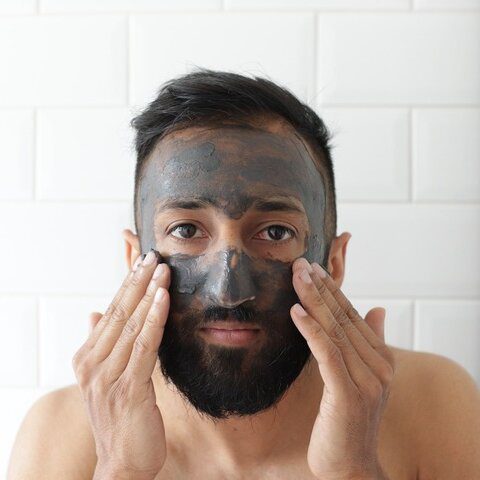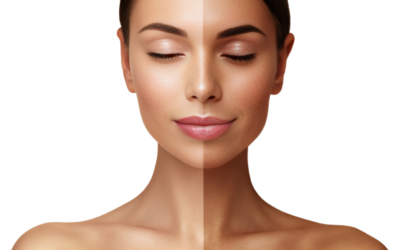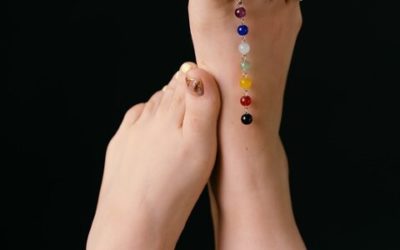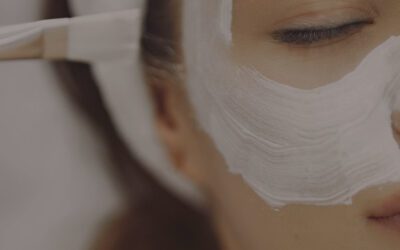1. Men’s skin is different from women’s skin
You might have noticed that you can’t buy a male facial at Sephora. I don’t know why, but for some reason it looks like men’s skin is not on the market. Or at least, it looks like there are no male facial products. But there is something else going on here.
Men’s skin is different from women’s skin in many ways. For example, men typically have more coarse hair than women do; and if they have any facial hair, it tends to be much more coarse (men have more facial hair than women).
Another difference that frequently goes unnoticed is that men’s skin tends to be drier (which can make finding moisturizers pretty challenging). In fact, most brands make a point of telling you that their product will work for both genders. The beauty of this approach is that you don’t need to triangulate between the two (like most people do). Rather, you can just choose the product that works best for your specific type of skin. It also allows you to use one brand as a foundation for your entire skincare routine — meaning less time worrying about which skincare product to use tomorrow and more time just applying whatever surface treatment or moisturizer feels best right now.
In addition to these physical differences between men and women’s skin, men’s skin also tends to be much more sensitive than women’s skin. This means that even products designed as “oily/combination/sensitive” may still cause breakouts for some men with sensitive or combination skins (though this doesn’t mean all products are bad for everybody). And if you aren’t sure what kind of skincare line would work best for your specific skin types, it may be worth taking a look at the ingredients in a lot of those lines and see what those words mean before buying them (for example: “oil-free” doesn’t necessarily mean no oil was used at all but rather means nothing has been added specifically for the purpose of improving oil control).
Finally, because men may have more coarse hair than women do, they tend to require less frequent washing/cleaning/scrubs — though this isn’t always true depending on how much hair they have and how they groom themselves when they wash their faces. So while you may end up using less shampoo and conditioner in general, it may still be worth investing in a better shampoo and conditioner since.
2. The best facial treatments for men
Facial massage is one of the most popular treatments that men receive, and it’s easy to understand why: The process of massaging a man’s skin can be relaxing, and it brings out the natural oils in his face.
The best facial treatment for men, though, is the combination of a deep cleansing and exfoliating treatment; an anti-aging treatment; and a soothing massage.
If you have skin that’s prone to pores or skin that’s aging, then a facial mask is also recommended. But if you have dry skin or sensitive skin, then other treatments are recommended — especially if you haven’t had a facial treatment in years.
3. Cleansing
Facial cleansers can be divided into three broad categories:
1. Cleansers that remove the dirt and grime from your face;
2. Cleansers that remove the oil from your face;
3. Cleansers that cleanse your face without cleansing it;
The first two categories are quite common, but the third is quite rare: a facial cleanser that removes all traces of oil from your skin for as long as you have any remaining oil. The reason? Hydration, which is a byproduct of cleansing, and which will return after cleansing because it is crucial for the health of the skin. They tend to be harsher on sensitive skin than other cleansers and work best when used in tandem with a good moisturizer or splash on at night, rather than alone. These are some of the most popular facial cleansers:
1. Strawberry Glow Cleansing Oil by The Ordinary
2. Vitamin B3 Facial Cleanser by L’Oréal Paris
3. Neutrogena Whipped White Cleansing Lotion by Neutrogena
4. Konjac Sponge Facial Cleanser by Amore Pacific
5. Nivea Facial Wipes to Cleanse & Sooth Face – Pink Fresh® (2-Pack)
6. Glow Pump Skin Brightening Facial Cleanser by The Ordinary
7. Luxury Facial Defining Day Cream with Ultra-violet Pigment SPF 15 by Neutrogena – Sensitive Skin (2-Pack)
8. Facial Toning Scrub with Vitamin C by Nykaa – Sensitive Skin (2-Pack)
9. Neutrogena Anti-Aging Night Cream* by Naturals™ (1-Pack)*
10. Facial Toning Powder 2g Vitamin C Serum* by Nykaa – Sensitive Skin (2-Pack)*
11. Lip Butter King Lip Treatment Lotion*
4. Exfoliating
Exfoliating is a process of removing the top layer of skin so that the deeper layers underneath can be exposed. There are two main kinds of exfoliation: chemical and mechanical.
Chemical exfoliation involves rubbing a chemical substance onto the skin, while mechanical exfoliation involves rubbing against something, often a hard surface (such as a piece of wood) or another person’s body. The idea is to take the top layer of skin and expose the underneath.
Mechanical exfoliation tends to be more rejuvenating than chemical exfoliation because it uses gentle pressure on the outermost layers of skin (the “epidermis”) which helps to remove dead cells and get them off, dispersing them into the surrounding tissue.
Whereas chemical exfoliation effectively removes dead cells, mechanical exfoliation is easier on the skin because it doesn’t perturb normal skin cell functioning or cause any serious damage to it. The two methods work differently for different reasons:
Chemical exfoliation uses chemicals which are abrasive and cause immediate damage to pores in order to extract protein from these pores and remove them; whereas mechanical exfoliation uses something that mimics this action in order to get rid of excess watery stuff but doesn’t do any immediate damage
Another type of mechanical exfoliation involves rubbing against something hard (such as a body part) in order to “break down” a thick layer of dead cells. This type is usually referred to as deep tissue massage or Swedish massage. It works better on older people because they have thicker epidermis and less collagen in their bodies compared with younger people who have thinner epidermis which means it may not be as effective on their skin but can provide more benefits by breaking down that extra collagen which helps with wrinkles while maintaining elasticity when they get older (which will reduce lines on your face).
A third kind involves squeezing facial muscles in order to break down big clumps of dead cells seen below. These last two types work only for some other reason than removing dead cells, such as for cleansing or toning (see below). Most facial services don’t seem interested in doing either of these kinds (although there are exceptions). If you want facials that work well at both mechanical and chemical levels, you would have to go with either Swedish massage or deep tissue massage; if you want facial services that focus mostly on one kind like Swedish.
5. Steaming
The classic technique for improving the texture and appearance of our skin is steaming. Steam is a form of steam, a heat source that doesn’t cause dryness. It can also be used as a styling tool to soften a beard or undercut. Cool steam (40-45 degrees Celsius) will make your skin feel very soft, while hot steam (60-70 degrees Celsius) can be used to tighten facial lines, but not too many people like to use this method because it can cause irritation and harm the skin.
I really like using steaming on my face, especially at night when I do my facials. It helps clear up acne and makes your skin feel so soft and smooth that you don’t even want to stop steaming!
To cleanse the face, you first need to exfoliate (which means scraping off dead skin). This is very important because the more dead tissue there is on your face, the harder it will be for pores to close properly — which leads to uneven looking pores and wrinkles as well as breakouts. If you are using a chemical exfoliant in this step, it could be better if you put out some fragrant oil first before scraping off the dead layer of skin.
Once the exfoliating step has been completed and your skin has been cleaned up, you need to follow up with a moisturizer or an anti-aging facial mask. Facial masks are just as important as moisturizers in terms of keeping your skin hydrated so it looks healthy and youthful — they should be applied after cleansing every other day or two. You don’t want to overdo it with masks though because they can become drying if they are left on too long (they are best applied once or twice each week). If you do leave them on too long though, it might lead to more breakouts!
6. Anti-aging face mask
One of the best things you can do to improve your skin’s overall health is to get a facial with a professional. A great facial is like getting a pedicure every week. They are rejuvenating, and for the most part, you don’t need to do anything more than that. But it’s important to take care of yourself as well. The treatments we offer at Face life help you look your best from head to toe and give your skin the nutrients it needs for its overall health by removing impurities, minimizing wrinkles, and improving younger-looking skin.
The steps below are simple enough that even if you have never done facials before, they will be easy enough for newbies (like me) too:
Step 1: Cleanse and Exfoliate;
Step 2: Steaming/Steam;
Step 3: Massage/Hydrate;
Step 4: Hydrate;
Step 5: Tone/Moisturize/Retinol;
Step 6: Mask/Restore.
7. Toning
The first step in facial rejuvenation is cleansing the face. This can be done using any convenient method, including using a non-chemical cleanser or skincare product, with scrubbing to remove all skin impurities. Once the face is clean and dry, it’s time to exfoliate.
This step can be skipped depending on your skin type, as exfoliation will affect certain types of skin and not others.
Once exfoliation has taken place and removed impurities from the skin, next comes toning. This is a simple process of massaging into the skin for 10-20 minutes. Toning stimulates collagen production so that the face looks younger, smoother and tighter.
After toning, a soothing massage will be applied for about 20 minutes before washing off the product with warm water and cold water (see above). Once you rinse out your face, you’re ready to go!
8. Moisturizing
The skin is the second largest organ of the body, and for good reason: it is incredibly sensitive. Because of this sensitivity, we need to take care of our skin at every stage during its life. We want our skin to be *new* every morning, *aged* every day, *tan* only when necessary, and *happy*.
The most important step in making sure that your skin stays young and healthy is moisturizing.
But what is a moisturizer? It’s a lot more than a lotion or cream that you rub on your face — it’s an ingredient designed to go on top of your favorite foundation so that it lasts longer. Moisturizers come in many forms and with many different functions:
– There are creams (like your own) and lotions (like Cover Girl) that you apply directly to the face;
– There are liquid formulas (like Neutrogena Ultra Sheer Dry-Touch with SPF 15) that are used as facial mist;
– There are serums (like Genova Swiss-Luminex) which are applied directly to the skin;
– There are gels (like Neutrogena Hydro Boosting Tinted Moisturizer), which contain a base of emollient like glycerin or hyaluronate;
– There are gel packs (such as Base Me Up Gel Duo or Origins Natural Blemish Balm), which contain a choice of emollients like aloe vera or hyaluronic acid — either alone or layered with other ingredients like vitamins A&D;
– And finally there’s waxes, which are applied as an effective barrier to active acne-fighting ingredients like salicylic acid, benzoyl peroxide, or retinol;
Depending on their intended purpose, each of these types can be applied differently — some require direct application while others can be diluted into water or cream form before being rubbed onto the face. Who should benefit from using these moisturizers? Everyone! But not everyone has identical skin types: some people have dryer skins than others; some have more oily skins than others. Most importantly though all people should be using these moisturizers — for good reasons! Each type has advantages and disadvantages depending on individual needs. The key thing though is that moisturizing protects against premature aging and keeps pores closed so they can’t get clogged by dirt or oil.
9. Soothing, relaxing massage
At the moment, there is no one facial routine that is universally good for all skin types. Exfoliation is a crucial step to take for healthy, glowing skin. However, certain forms of exfoliation may not be as good for your sensitive skin, so it’s important to find out what works best for you.
Here’s an overview of the different types of facial massage and how they might help you plan your next facial spa treatment:
1. Steam (also known as steaming): Steaming involves using hot water to gently press on your face while holding down a towel or other cloth. This is a popular form of facial steam therapy because it reduces redness and helps your skin to heal faster after a pimple breakout.
2. Organic/Neutral Facial Massage: The term “neutrally” means that it doesn’t have any particular scent or temperature and doesn’t involve any oils or lotions at all. Neutral facials use water and a mild oil such as almond or avacado oil to work on your face from all angles — from forward, back, side, up-and-down — without getting too close to your eyes or mouth.
3. Shiatsu/Craniosacral Facial Massage: Shiatsu massage involves putting pressure into acupuncture points on the scalp and other areas of the body (like the neck) by stroking in circular motions with fingers or hands. This type of massage is considered safe for sensitive skin, but sometimes can cause redness if done incorrectly (so beware).
4. Manual Lymphatic Drainage Massage: Manual lymphatic drainage massage uses gentle pressure over large areas on your back, shoulders and upper arms (like underarms) to draw out damaged lymphatic tissue and bring more up through the surface of your body so that it can flow throughout your system and cleanse more effectively (and more efficiently). To get the best results with manual lymphatic drainage massage, follow these steps: (1) Get into an upright position — don’t lie down! (2) Hold a small pillow in each hand so that you’re sitting comfortably in front of the chair’s edge with both legs tucked under you .
10. Conclusion: Facial treatments are important for men
Facial treatments for men are very important and endorsed by the American Medical Association (AMA), the American College of Ophthalmologists, and the American Academy of Facial Plastic and Reconstructive Surgery.
Many products on the market today target women. There are many facial moisturizers, skin exfoliators and cleansers that have been specifically created to be used by women. Many of these products have been formulated with a woman’s needs in mind and are priced accordingly.
But some of these products do more than target women’s needs: they also seek to target male customers as well. These facial treatments are good for both genders because they address different issues that both genders face. And they should be marketed to both, as they serve different needs.
A good example is the Azelaic Acid Facial Treatment, which uses pure Azelaic Acid (which is derived from yeast) to unclog pores and remove excess oil from your face. Not only does it work for your face but it also works for your hair; making it a great product for men who want their hair to feel smoother because their hair is already smooth due to being oily on a daily basis:
An effective facial treatment must address multiple aspects of skin care, including cleansing, exfoliation, moisturization, and restoring moisture levels in skin cells. This may not be particularly novel or revolutionary but it keeps you from having to worry about “what” you need when you use a product—you just have to focus on “how” you need it!




